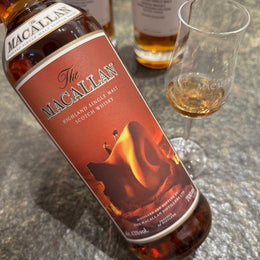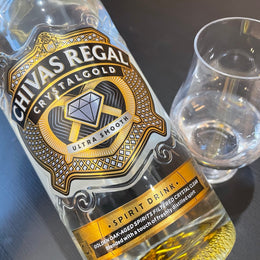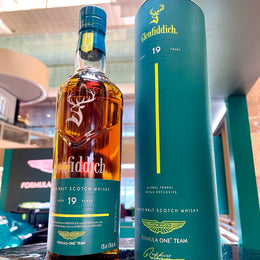
Today kicks off Scotch 101 Week on my account. For the next five days, I’m going to be talking about the lingo and various regional idiosyncrasies of single malt vs. blended vs. single grain scotch, then cap it off with reviewing maybe the two most well-known scotches in the world right now: Johnnie Walker 12/Black Label and the infamous Johnnie Walker Blue Label.
Today let’s cover some legal definitions and production info.
There’s a couple of big laws that govern what go into calling whisky “single malt scotch.” The most important are: 1) it has to be distilled at a single distillery (otherwise it has to be marked blended or blended malt scotch), 2) the mash bill has to be 100% malted barley (otherwise it’s marked grain whisky), and 3) it has to be aged in Scotland for at least 3 years.
Notably versus bourbon, not only are used casks allowed, they’re the norm. The vast majority of distilleries age in “American oak” (code for bourbon casks) or “European oak” (code for wine barrels, usually Spanish sherry casks but there’s a lot of port and French wine in there too). Rum and rye cask finished scotch has started gaining steam in the last few years too. Additionally, food coloring is allowed to be added (and some really famous outfits like Dalmore do), and while it doesn’t change the taste, it is annoying. Distilleries that don’t use food coloring, like Highland Park and Aberlour, very pointedly like to add a label mark that says “Natural Colour Only.”
Then there’s stills and production. In single malt scotch, nearly everything is pot still distillate, versus bourbon and grain whisky which is overwhelmingly made with Coffey stills, or its descendant the column still. Pot stills give a much lower yield than Coffey/column stills, hence one reason scotch tends to run pricier than bourbon historically. However, pot stills do provide one advantage/difference: they tend to let a lot more heavy oils and congeners pass through to the final distillate that column plates strip out. Thus, a lot of people will say bourbon tastes brighter/thinner compared to scotch. Again, this is a generality, not an absolute truth.
Image courtesy of Jon who also writes on Low Class & High Proof.


I learned how to make cocktails watching Danger 5







